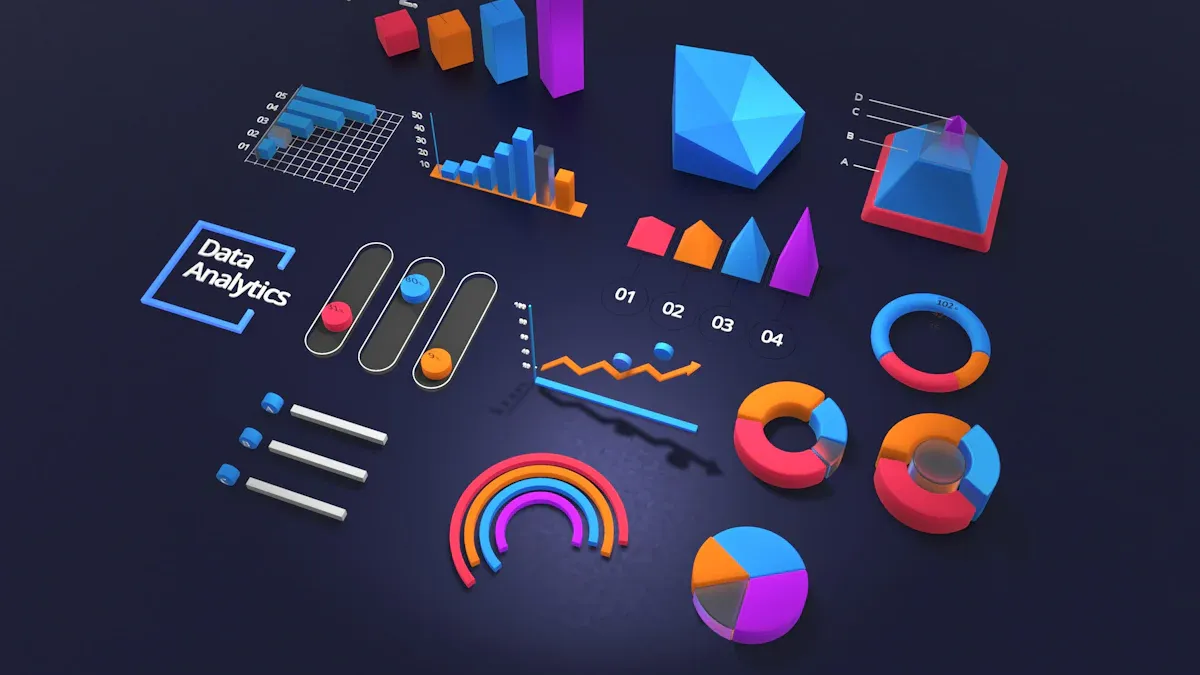What Are Hiring Velocity Metrics and Why They Matter

Hiring velocity metrics measure how quickly and efficiently you fill open positions. They’re more than just numbers—they’re a reflection of your ability to meet talent needs in today’s competitive job market. Think about it: the faster you hire, the quicker your team can tackle business goals. For example, industries like construction average just 12.7 days to fill a role, while health services take 49 days. A strong hiring velocity not only saves time but also boosts productivity and reduces costs. It’s a game-changer for recruitment strategies and long-term success.
Key Takeaways
Hiring velocity metrics show how fast jobs are filled. Faster hiring improves work output and saves money.
Knowing hiring velocity helps you check your hiring process. It shows if your hiring matches your company’s needs.
Better hiring velocity makes hiring smoother. It helps you hire great workers quickly and spend less money.
Quick hiring helps businesses do well. Filling jobs fast helps teams reach goals and stay ahead.
Having a talent pool gets you ready for future hires. It lets you choose from pre-checked candidates, speeding up hiring.
Understanding Hiring Velocity Metrics

What Are Hiring Velocity Metrics?
Hiring velocity is a talent acquisition metric that measures how quickly your organization fills open positions compared to the number of roles created over a specific time. It’s not just about speed—it’s about effectiveness. This metric gives you a clear picture of how well your hiring process aligns with your recruitment goals.
Here’s what defines hiring velocity:
It tracks the number of hires against the number of positions opened during a set time period.
It focuses on the overall effectiveness of your talent acquisition efforts, not just the time it takes to fill a single role.
A positive hiring velocity means you’re filling more positions than you’re opening, which reflects a strong recruitment strategy.
By understanding this metric, you can evaluate your hiring process and identify areas for improvement.
Hiring Velocity vs. Time to Hire
You might wonder how hiring velocity differs from time to hire. While both are important, they serve different purposes. Time to hire measures how long it takes to fill a single position, from the moment a candidate applies to when they accept an offer. It’s a great way to spot inefficiencies in your recruitment process.
“Hiring velocity measures a change in position over time, while time to hire tracks the duration for a candidate to be hired.”
Here’s a quick breakdown:
Time to hire focuses on individual roles and the efficiency of the hiring process.
Hiring velocity looks at broader trends and the overall momentum of your recruitment efforts.
Time to hire helps you fine-tune specific steps, while hiring velocity informs high-level decisions and resource allocation.
Both metrics are valuable, but hiring velocity gives you a more comprehensive view of your talent acquisition effectiveness.
Why Hiring Velocity Is a Key Metric
Hiring velocity isn’t just another number—it’s a game-changer for your recruitment strategy. It helps you understand your hiring speed and identify factors that impact your ability to fill positions. This metric aligns your talent acquisition efforts with your business goals, ensuring you have the right people in place when you need them.
For example, hiring velocity measures the percentage of jobs filled on time. A higher velocity means your hiring process is efficient and supports your company’s growth. It also provides a snapshot of hiring trends, helping you plan for future workforce needs.
By focusing on hiring velocity, you can optimize your recruitment process, reduce costs, and improve productivity. It’s a key metric for staying competitive in today’s fast-paced job market.
Why Hiring Velocity Metrics Matter
Enhancing Recruitment Efficiency
Improving hiring velocity can transform your recruitment process into a well-oiled machine. When you measure and optimize this metric, you’ll notice several benefits:
Gain a competitive edge by securing top talent faster than your competitors.
Reduce costs and boost recruitment ROI with streamlined hiring cycles.
Accelerate time-to-productivity, allowing new hires to contribute sooner.
Create a positive impression on candidates, enhancing their experience and your employer brand.
Adapt quickly to changing talent needs, ensuring scalability and sustainable growth.
By focusing on hiring velocity, you can identify bottlenecks in your hiring process and make data-driven improvements. This not only saves time but also ensures you’re attracting and retaining the best candidates in the market.
Supporting Business Success
Hiring velocity plays a direct role in your company’s success. A fast and efficient hiring process ensures you’re filling roles promptly, which is critical for meeting business goals. Companies that prioritize hiring velocity often outperform their competitors in attracting top talent.
“The speed of filling positions impacts productivity and helps you stay ahead in a competitive market.”
When positions remain unfilled for too long, it can hurt your team’s ability to meet objectives. Faster hiring reduces vacancy costs and ensures your team has the resources to achieve its targets. It also reflects your company’s ability to adapt and grow in a dynamic business environment.
Driving Strategic Workforce Planning
In today’s fast-paced industries, hiring velocity metrics are essential for strategic workforce planning. These metrics help you align hiring numbers, timing, and salary ranges with your business goals. For example, companies like Amazon and Google use hiring velocity to stay ahead.
Company | Description |
|---|---|
Amazon | Rapid hiring during peak seasons using AI to enhance candidate experience. |
Structured interviews with consistent criteria to minimize bias and improve hiring efficiency. |
By benchmarking your hiring velocity against industry norms, you can gain a competitive advantage. This insight allows you to plan better, attract top talent, and ensure your workforce is ready to meet future challenges.
How to Measure Hiring Velocity
The Formula for Hiring Velocity
If you’re wondering how to calculate hiring velocity, don’t worry—it’s simpler than it sounds. This metric gives you a clear picture of how quickly your hiring process is moving. Here’s the formula:
The "number of hires" refers to the total candidates you’ve successfully onboarded within a specific period. Meanwhile, "time to hire" measures how long it takes to bring a candidate on board, starting from their application to the moment they accept the offer.
For example, if your team hired 20 people in a month and the average time to hire was 10 days, your hiring velocity would be 2 hires per day. This formula helps you track your hiring efficiency and identify areas where you can improve.
Key Factors Influencing Hiring Velocity
Several factors can impact your hiring velocity, and understanding them is crucial for optimizing your recruitment process. Here are some of the most significant ones:
Internal Challenges:
Availability of hiring managers and decision-makers can delay interviews.
Lengthy recruitment processes with too many stages slow down candidate movement.
Limited budgets and resources can extend the time to fill positions.
External Influences:
Market conditions, like economic downturns, can increase application volumes, slowing response times.
Industry-specific factors, such as regulatory requirements, may lengthen hiring timelines.
Tools and Strategies:
Recruitment technology, like ATS and AI tools, can speed up the hiring process.
A strong employer brand attracts candidates faster, reducing sourcing time.
Efficient decision-making processes prevent delays in hiring approvals.
Empowering your HR team to make decisions independently can also make a big difference. When leaders act decisively, they eliminate unnecessary delays, ensuring candidates move through the pipeline quickly.
Market conditions play a role too. In a competitive job market, you’ll need to act fast to secure top talent. On the flip side, during economic downturns, the sheer volume of applications might slow things down. Recognizing these factors helps you adapt your strategic hiring process to maintain a strong hiring velocity.
Strategies to Improve Hiring Velocity

Leveraging Recruitment Technology
Recruitment technology can be a game-changer when it comes to improving hiring velocity. Tools like applicant tracking systems (ATS) streamline workflows, automate candidate screening, and organize applicant data efficiently. This saves time and allows you to focus on engaging with top talent. AI-powered tools, for instance, can accelerate screening by parsing resumes and predicting candidate success. Video interviewing platforms also make remote interviews more flexible and efficient.
To get the most out of recruitment technology, follow these best practices:
Train your HR team to use the tools effectively.
Use technology to handle administrative tasks, freeing up time for strategic decisions.
Maintain a human connection throughout the process to ensure candidates feel valued.
By implementing these strategies, you can boost hiring velocity while keeping the process smooth and candidate-friendly.
Enhancing Candidate Experience
A positive candidate experience directly impacts your ability to hire quickly. When candidates feel respected and informed, they’re more likely to accept offers promptly. Did you know that 69% of job seekers avoid companies with poor reputations? That’s why creating a great experience is crucial for attracting top talent.
Here are some actionable steps to enhance candidate experience:
Simplify the application process to reduce drop-offs.
Share a clear hiring roadmap with candidates.
Provide timely feedback and updates throughout the process.
Personalize communication to make candidates feel valued.
Collect feedback from candidates to continuously improve your hiring strategy.
These steps not only improve hiring velocity but also strengthen your employer brand, making it easier to attract better sources for finding new recruits.
Using Data Analytics
Data analytics is a powerful tool for identifying bottlenecks and optimizing your hiring strategy. By tracking metrics like time-to-fill and candidate drop-off rates, you can pinpoint inefficiencies and make targeted improvements. For example, segmenting data by role or department can reveal patterns that slow down your hiring process.
Analytics tools also provide insights into your talent pipeline. They help you monitor diversity, conversion rates, and sourcing effectiveness. This data allows you to allocate resources to better sources for finding new recruits and refine your hiring strategy. Regularly reviewing these insights ensures you stay ahead in the competitive talent market.
By leveraging data analytics, you can make smarter decisions, improve hiring velocity, and build a more efficient recruitment process.
Building a Talent Pipeline
Building a talent pipeline is one of the smartest moves you can make to improve hiring velocity. It’s like having a bench of qualified players ready to jump in when needed. Instead of scrambling to fill roles, you’ll already have a pool of pre-vetted candidates who align with your company’s needs. Here’s how you can create a strong pipeline:
Define hiring criteria: Start by outlining the skills, experience, and cultural fit you’re looking for in candidates. This clarity ensures you’re targeting the right talent.
Expand sourcing channels: Don’t limit yourself to traditional job boards. Explore social media, employee referrals, and industry events to find hidden gems.
Build relationships with passive talent: Reach out to potential candidates even if they’re not actively looking. Personalized communication can keep them engaged and interested in future opportunities.
Standardize your screening process: Use consistent criteria to evaluate candidates. This ensures fairness and speeds up decision-making.
Leverage technology and automation: Tools like applicant tracking systems (ATS) can help you organize candidate data and streamline workflows.
A well-built talent pipeline doesn’t just save time—it transforms your hiring process. With a deeper bench of qualified talent, you can fill roles faster and avoid lengthy recruiting cycles. Hiring managers can tap into pre-vetted prospects immediately, giving you a competitive edge. Companies with mature pipelines often reduce their average time-to-hire by up to 50%.
Think of it this way: engaging with potential hires before roles open allows you to make better decisions. You’ll secure top talent before your competitors even get a chance. Plus, a strong pipeline ensures you’re always ready to meet your company’s evolving needs.
By investing in a talent pipeline, you’re not just improving hiring velocity—you’re setting your business up for long-term success.
Hiring velocity metrics are more than just numbers—they’re your roadmap to recruitment success. They help you assess whether your hiring process meets job demands and aligns with business goals. By tracking metrics like hire rate and retention rate, you can pinpoint bottlenecks and optimize your strategy. Tools like applicant tracking systems and recruitment marketing can streamline workflows and attract top talent.
Start measuring and improving your hiring velocity today. A faster, more efficient process doesn’t just fill roles—it drives business growth and keeps you ahead in the talent race.
FAQ
What is a good hiring velocity benchmark?
A good hiring velocity depends on your industry and company size. For example, tech companies might aim for 30 days, while retail could target 15 days. Compare your metrics to industry standards to set realistic goals.
Tip: Regularly review benchmarks to stay competitive in your field.
How can I improve hiring velocity without sacrificing quality?
Focus on streamlining your process. Use tools like applicant tracking systems (ATS) and pre-screening assessments. Build a talent pipeline to reduce sourcing time.
Keep communication clear and timely.
Involve decision-makers early to avoid delays.
Quality and speed can go hand in hand with the right strategy.
Does hiring velocity impact employee retention?
Yes, it does! A rushed process might lead to poor hires, increasing turnover. On the flip side, a well-optimized hiring velocity ensures you find the right fit, boosting retention.
Note: Balancing speed with thorough evaluation is key to long-term success.
Can small businesses track hiring velocity effectively?
Absolutely! Even without fancy tools, you can track hiring velocity using simple spreadsheets. Record the number of hires and the time taken to fill roles.
Use free analytics tools for better insights.
Focus on improving one step at a time.
Small changes can make a big difference.
What’s the biggest mistake when trying to improve hiring velocity?
The biggest mistake is prioritizing speed over quality. Rushing through interviews or skipping steps can lead to bad hires.
Reminder: Always balance efficiency with thoroughness. A fast hire isn’t worth it if they’re not the right fit.
See Also
Analyzing Cost-Per-Hire Through Applicant Tracking Systems
Revolutionize Your Recruitment Process With An ATS
Enhance Your Hiring Choices Using MokaHR's Monitoring Tools
From recruiting candidates to onboarding new team members, MokaHR gives your company everything you need to be great at hiring.
Subscribe for more information

